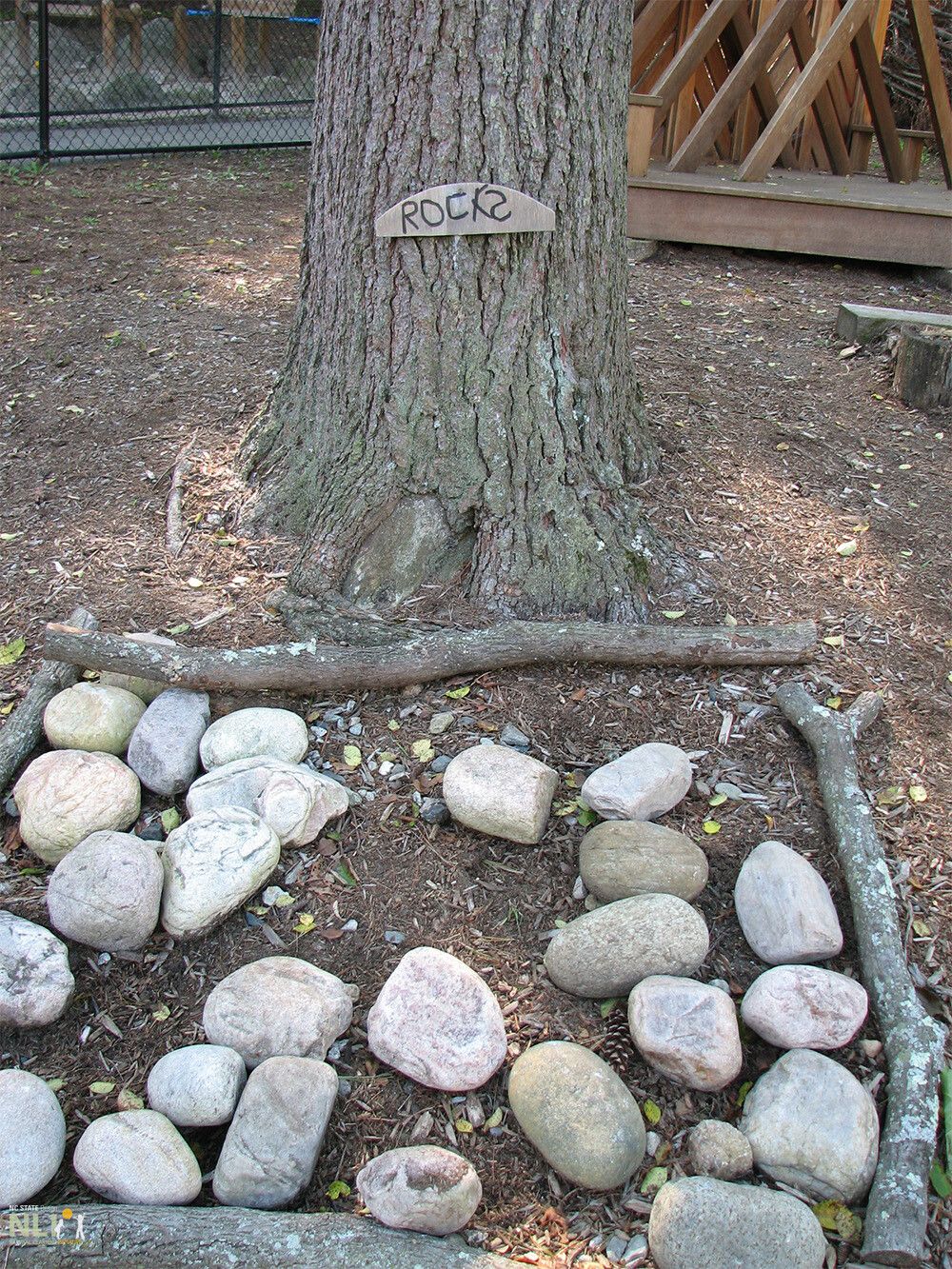Pebble Play
Mathematics and language skills are fundamental to children’s readiness for school. Practice, progress, and success in acquiring these early skills are highly predictive of later academic achievement in multiple subject areas. Opportunities to acquire beginning math and language skills during the early years help children connect ideas; develop logical and abstract thinking; and question, analyze, and understand the world around them.
Setting:
Flat area in the outdoor learning environment (OLE)
Focus:
Using outdoor pebble play to reinforce basic math and language concepts
Curricular Areas:
- Physical development: gross and fine motor skills
- Mathematics knowledge and skills: counting, matching, sorting, comparing, serializing, recognition of patterns and shapes, one-to-one correspondence, measuring
- Language and conceptual development
- Spatial awareness and development
Preparing the Pebble Garden:
- In a designated outdoor play space, create several small “sand-box type” structures with differing shapes (square, triangle, round, rectangle, etc.).
- A border material such as landscape logs may make the best borders to hold pebbles and rocks and create safe “pebble gardens.”
- Fill each frame with pebbles of different sizes, colors, shapes, and weights.
- Provide near-by work tables (e.g. stumps, a solid piece of wood on the ground, or a workspace made from tiles).
Suggestions:
- Model interactions with the stones and pebbles for children that support their development in the curricular areas above and give them opportunities to practice those skills at their own pace. Encourage them to sort pebbles and stones by shape, color, or size. Include prompts that encourage counting and sorting, such as “Lets try placing all the gray pebbles in the triangle garden!”
- Add containers of different sizes for children to transport pebbles from the “garden” to the workspace.
- Add a matching game with shapes made from wood or other material that will hold in outdoor conditions. Shapes should be the same size as each pebble garden.
- Add additional pebble gardens (diamond, hexagon, pentagon, and polygon) for older children.
- Remember, for these early experiences, it is not important for children to get the “right” answer or produce the perfect product, but rather that they be allowed to interact with the “loose parts” (pebbles and stones) and learn at their own pace.
Engaging Parents:
- Show parents the pebble play space and let them know their children will be building foundations for later math and language by playing in this space.
- Share with parents the curricular areas above to help them understand how interaction with loose parts builds math and language skills, and therefore prepares children for school.
- Encourage parents to make their own pebble/rock gardens at home.
Materials:
-
Smooth stones and pebbles of different shape, size, and color
-
A “border” material for pebble gardens, such as landscape logs, large tree branches, or bamboo poles
-
A variety of containers for children to carry stones


